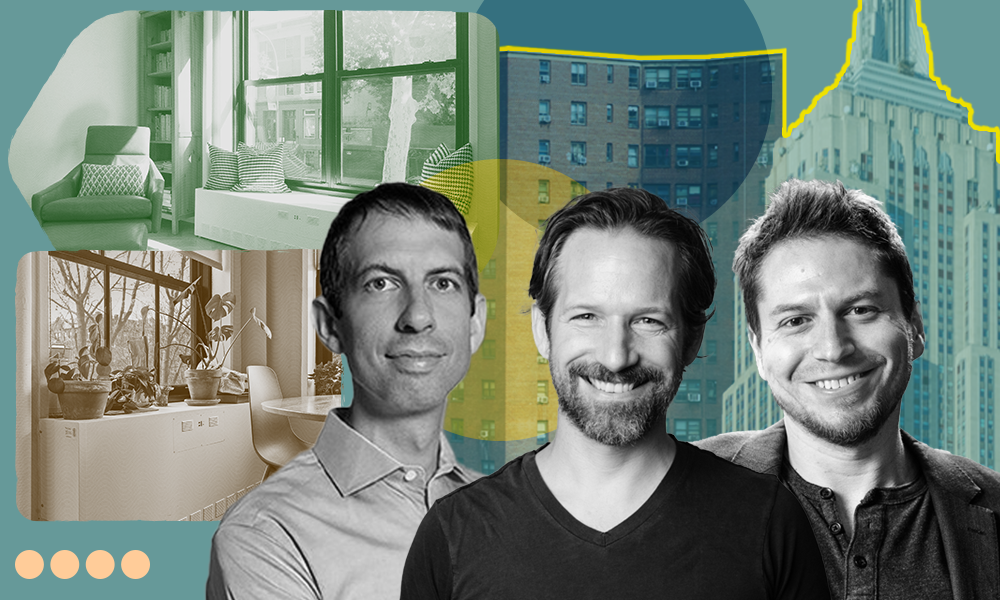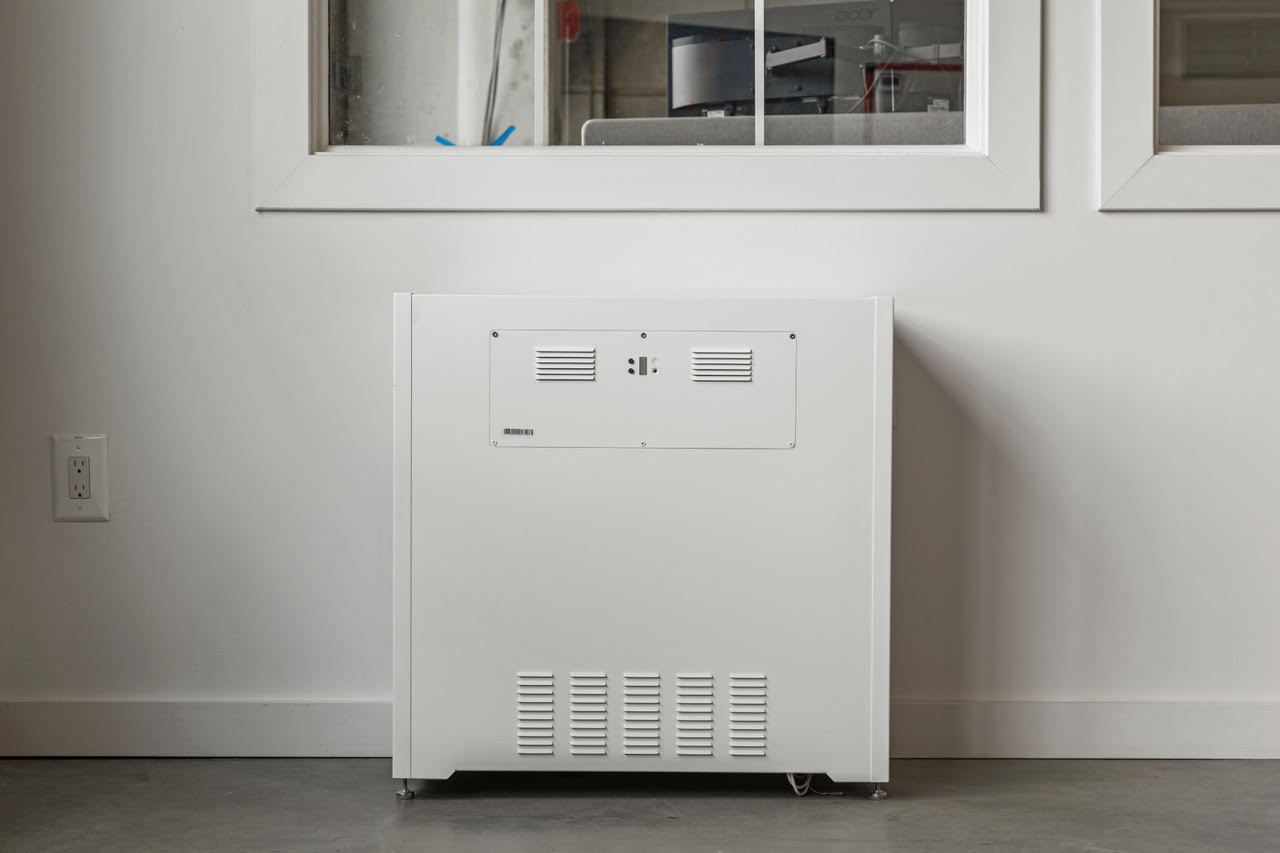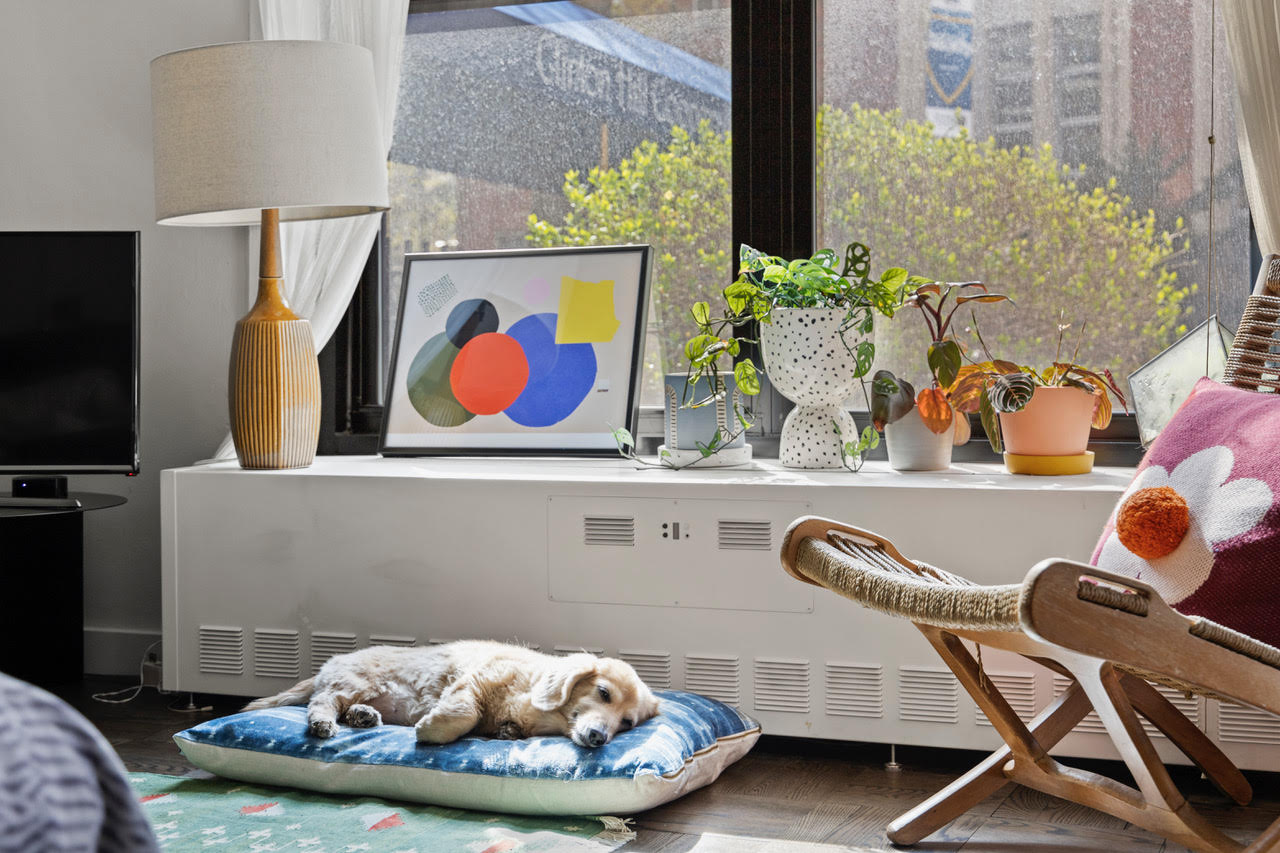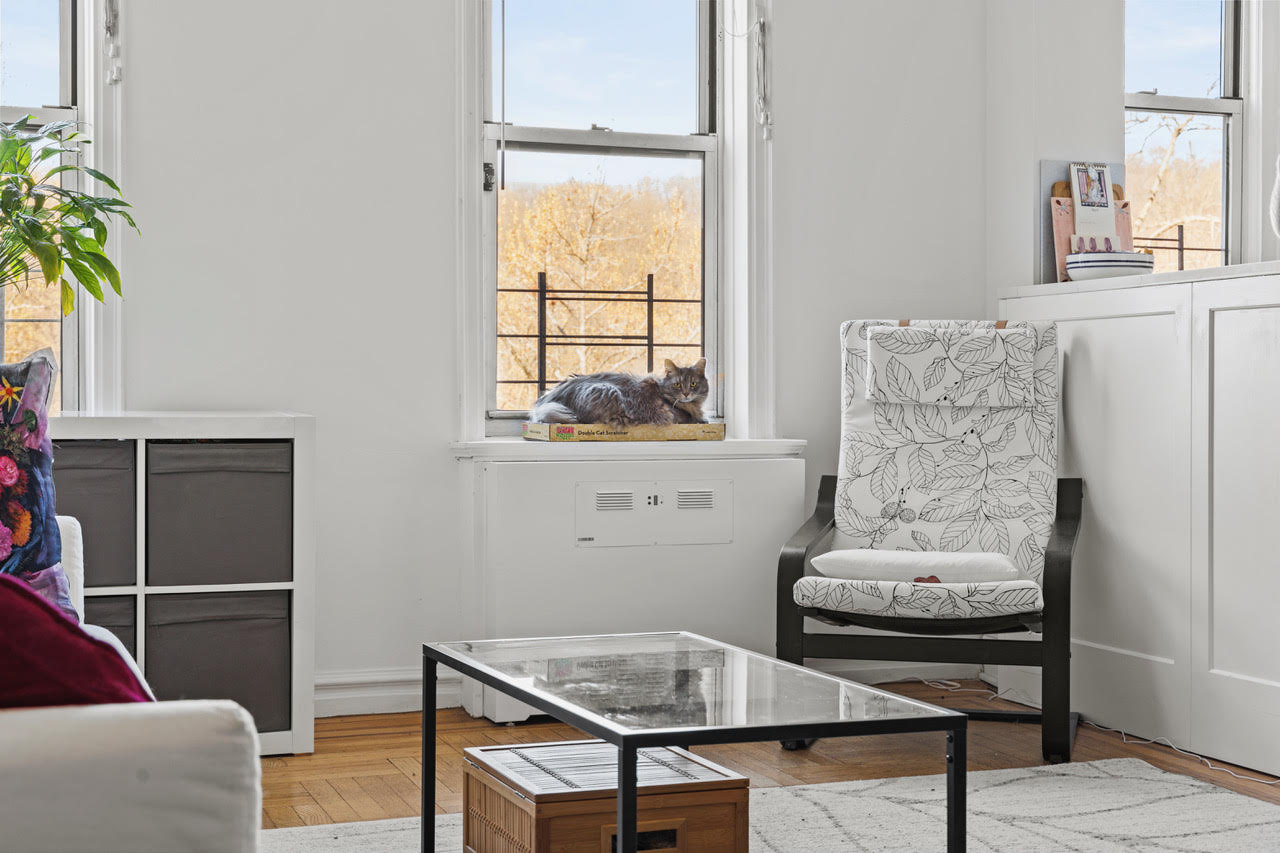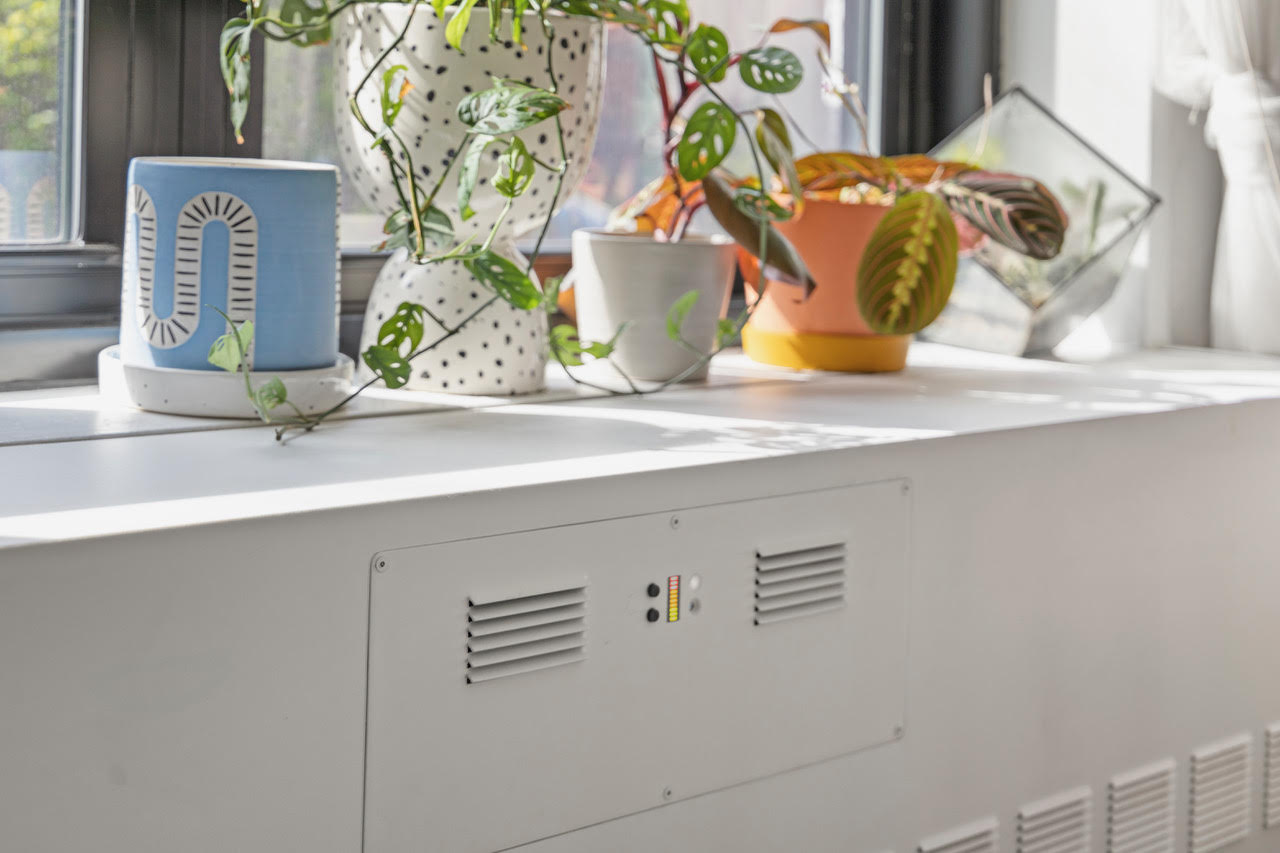With a major Local Law 97 deadline looming over the heads of NYC building owners, Kelvin’s high-tech, money-saving solution might just be the silver bullet the city needs to reach its green goals.
The Cozy is a forward-looking, cutting-edge, smart, radiator cover designed to turn NYC’s ubiquitous century-old radiators into modern systems at no net cost to building owners. With a newly launched subscription service intended to help building owners save money, comply with Local Law 97, and lower greenhouse gas emissions by reducing energy usage, The Cozy represents the future of heating for New York City’s two million radiator-heated apartments. TRD sat down with Kelvin Founder and CEO Marshall Cox, Vice President of Business Development Matthew Isaacs, and COO Ely Greenberg to talk about this uniquely New York solution.
A New York Icon In Need of a Facelift
Anyone who has lived in NYC is familiar with the city’s signature cast iron radiators. Though they may be simple, these boxy metal behemoths are a time-tested and, at least historically, cost-efficient heating solution.
“Radiator systems have been around for over one hundred years,” says Cox. “They’re pretty amazing.”
Of course, the noisy, hard-to-regulate, and searing-hot radiators have drawbacks. Not only has the rising price of fossil fuels increased the cost of running the boilers that power these radiators, but the simple fact that they are powered by fossil fuels makes them a major hurdle in reducing greenhouse gas emissions per the city’s climate change mitigation policies, as expressed by regulations, including Local Law 97.
Plus, they’re simply inconvenient and outdated compared with modern alternatives. Safety considerations aside, regulating heat from radiators has always been a major challenge.
“I first moved to New York City almost 20 years ago and lived in a fifth-floor walkup on 3rd Avenue,” recalls Greenberg. “And I remember our first winter there, we would open the windows because the place was boiling hot.”
It was this very situation that led Cox to design the first version of what would eventually become The Cozy.
A High-Tech Solution for an Old Problem
The first Cozy was cobbled together from tin foil, a computer fan, an Arduino microcontroller, and some duct tape and placed over a dorm room radiator to help Cox’s brother sleep.
“I was at Columbia in grad school, and I had a dorm that was super overheated and uncomfortable,” explains Cox. “My twin brother was cast in a Broadway show, but you never know how long those are going to last. So he slept on my floor for six months and complained incessantly because he was next to the open window.”
In order to “placate” his brother, Cox set about inventing a generational heat regulation and energy efficiency solution. The idea behind the retrofit is fairly straightforward: by enclosing the radiator and distributing heat more efficiently, the Cozy prevents overheating and reduces energy waste. The real impact comes when the solution is scaled up throughout an entire building.
After creating the initial prototype to keep his brother comfortable, Cox continued to work on the tech, eventually winning the MIT Climate & Energy Prize and using the prize money to found the company that would become Kelvin.
Today’s Cozy is designed by a team of engineers using 100% recycled GREENGUARD Gold certified materials and computer components designed to last up to 20 years. The cover is controllable by a resident’s smartphone app and is tied into a network that feeds data back to Kelvin, where the entire building’s energy usage can be monitored.
“We can detect problems in buildings before any human,” says Cox. “We’ll send alerts to building staff letting them know their boiler just turned off. It’s a level of service that we try to provide to buildings so they can run as efficiently as possible.”
In addition to saving money via reduced heating costs and greenhouse gas emissions, Cozy is an amenity that owners can offer tenants. In a world of traditional radiators, having a smartphone-enabled thermostat is a revelation. The Cozy also collects room temperature, radiator temperature, and steam trap health data which is beamed to the cloud and integrated with the building’s boiler.
Subscribe and Save
Cox’s goal with Kelvin is to provide building owners with a resource-efficient decarbonization solution, which, given the requirements imposed on building owners by Local Law 97, could not come at a better time. But, as with so many climate change initiatives, the major barrier to implementing a seemingly obvious solution is cost. That’s why Kelvin has launched a subscription service that brings Cozy units to buildings around the city at no net cost to building owners.
“Our perspective is that decarbonization doesn’t have to cost a lot of money,” says Cox. “As a matter of fact, it should be economically driven.”
Greenberg laid out the basic pitch for us. In essence, building owners who install Cozy units will realize savings between 25% and 40% on their energy bill from the increased efficiency of the heating system without taking on any additional expenses.
“With the subscription, you have no out-of-pocket costs,” explains Greenberg. “You get instant savings from day one because we price the subscription at less than whatever your energy savings are.”
The subscription becomes an operating cost for the building, while Kelvin bears the risk and handles the various incentive and tax programs.
“By virtue of having Cozys installed, the building reduces their costs for utilities and then increases their net operating income on the property,” says Greenberg. “So the property is more valuable for not having to spend any money.”
Isaacs points out that “a Kelvin project helps buildings subject to Article 321 (the prescriptive pathway) knock out 3 of the hardest to implement measures in one tidy solution.” He adds, “Cozy systems enable owners of affordable housing properties to participate in the climate transformation with an economically rational offering that makes properties more comfortable to live in and less costly to operate.” It’s hard to argue with that.
The team is proud of the solution’s accessibility and the company’s commitment to serving all New Yorkers. “We are bringing this solution to a portfolio of 50 rent-stabilized buildings throughout Brooklyn, Manhattan, and the Bronx, at no upfront cost,” says Isaacs.
Kelvin has installed its systems in 200+ buildings in New York City, Boston, Providence, and Washington, D.C. In New York, buildings that range from Fairstead’s 41-unit rent-stabilized property in Hell’s Kitchen to a 1,200-unit co-op in Clinton Hill have saved as much as 42.7% in heating costs and have reduced emissions by thousands of tons of carbon per year. And, because Kelvin’s solutions include off-the-shelf units and custom-fabricated ones that can fit many of the different styles of radiators found throughout New York City, there’s no radiator-heated building they can’t improve.
The Carrot and Stick of Local Law 97
With Local Law 97 deadlines right around the corner, there’s never been a better time to subscribe with Kelvin. While complying with Local Law 97’s emissions standards has built-in advantages thanks to both inherent cost savings and additional rebates, what Isaacs calls “the stick” is about to drop on owners who have not lowered their building’s energy usage by the end of the calendar year.
“Starting next year, building owners of properties greater than 25,000 square feet must submit a report detailing greenhouse gas emissions or complete an inspection confirming they completed the list of prescriptive energy conservation measures. If they don’t comply, they’ll be subject to fines,” explains Isaacs. “We offer an easy solution for compliance so they can avoid penalties.”
If you’re ready to upgrade your NYC building’s radiator heating system and provide your residents with a state-of-the-art heating solution while saving money and complying with Local Law 97, reach out to Kelvin for a consultation today.


